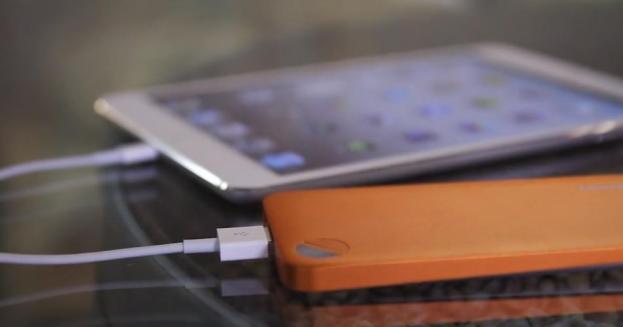
Already blasting through a $30,000 funding goal on Kickstarter, Jackery is launching a new battery design that’s approximately the same length, width and depth of a typical smartphone. Called the Jackery Air, the new battery design is nearly as thin as Apple’s iPhone 5 and will hold a charge up to six months when not in use. Providing a similar function as smartphone cases with batteries built into the design like the Morphie, the Jackery Air is a standalone device that can charge smartphones, tablets, MP3 players and portable gaming devices like the PlayStation Vita; basically anything with a 5V power input.

Both models will be the same size, but the 5000mAh model will weigh slightly more at 5.5 ounces compared to the 5 ounce 2800mAh model. As a comparison, Apple’s iPhone 5 weighs about 3.95 ounces and the Samsung Galaxy S4 weighs about 4.6 ounces.
Regarding recharging time of the Jackery Air itself, the Samsung battery cell inside the device will take about five hours for the 2800mAh model to fully recharge and six hours for the 5000mAh model. On the bottom of the Jackery Air, the user will find the USB port to connect mobile devices to the Jackery Air as well as the input to connect the Jackery Air to a source of electricity for charging. After connecting a mobile device, the user presses the button on top of the Jackery Air to start the recharging process. The same button uses a three-color LED to indicate how much battery life is left in the Jackery Air.

Interestingly, the Jackery Air differs significantly from the majority of Kickstarter projects in that the company is already extremely familiar with the manufacturing process due to other mobile chargers such as the Jackery Mini, Jackery Bar and the Jackery Giant. Tasks such as product design, prototype creation, FCC certification and case molding testing are already complete for the Jackery Air. In fact, Jackery plans to manufacture the Jackery Air as soon as the company receives the project funding from Kickstarter.
The company is currently estimating delivery during July 2013 according to the Kickstarter project page.Regarding pricing, the 2800mAh model of the Jackery Air will retail for $69 and the 5000mAh model will retail for $89. However, there are still a significant number of discounts available to project backers offering deals on multiple products as well as special bundle packages.


